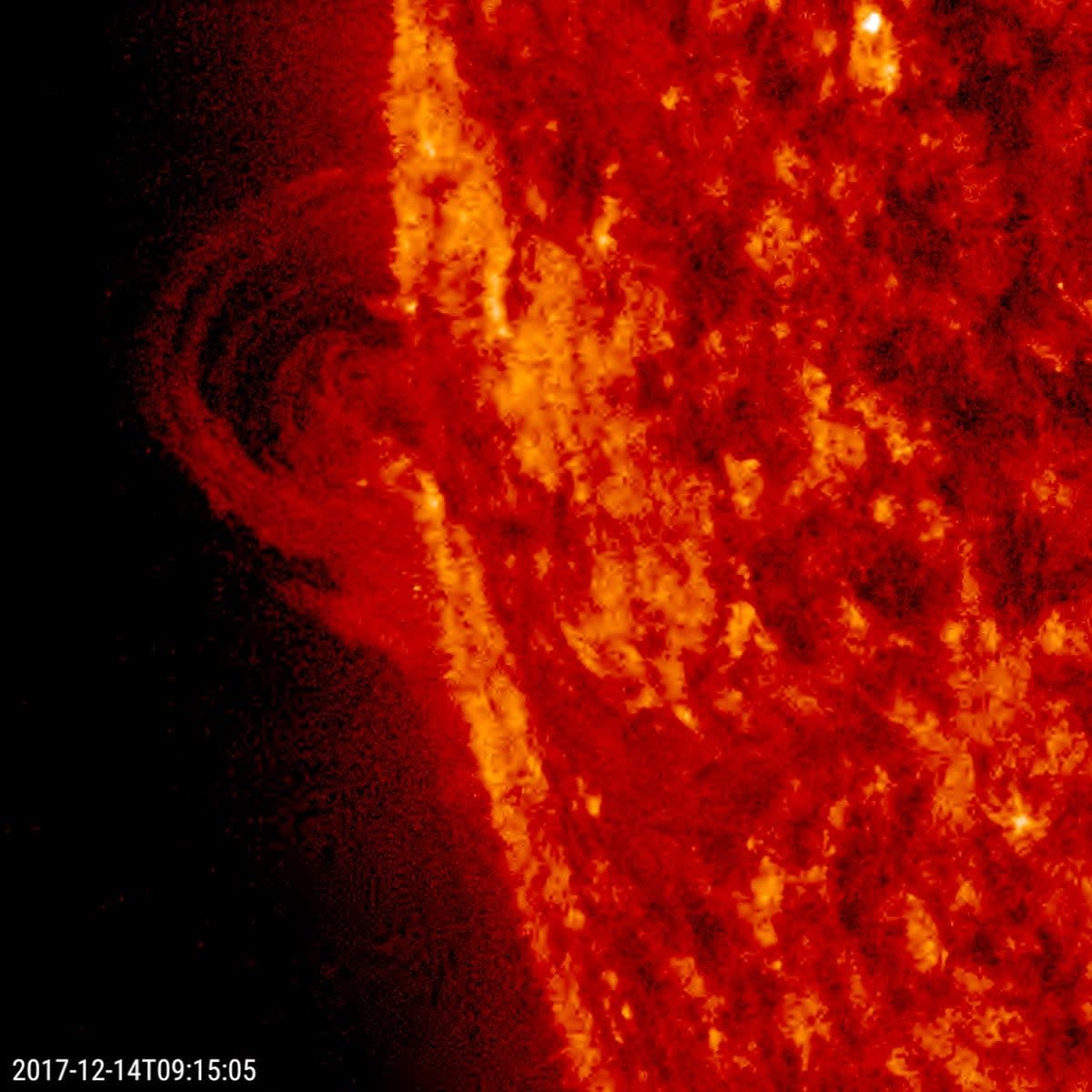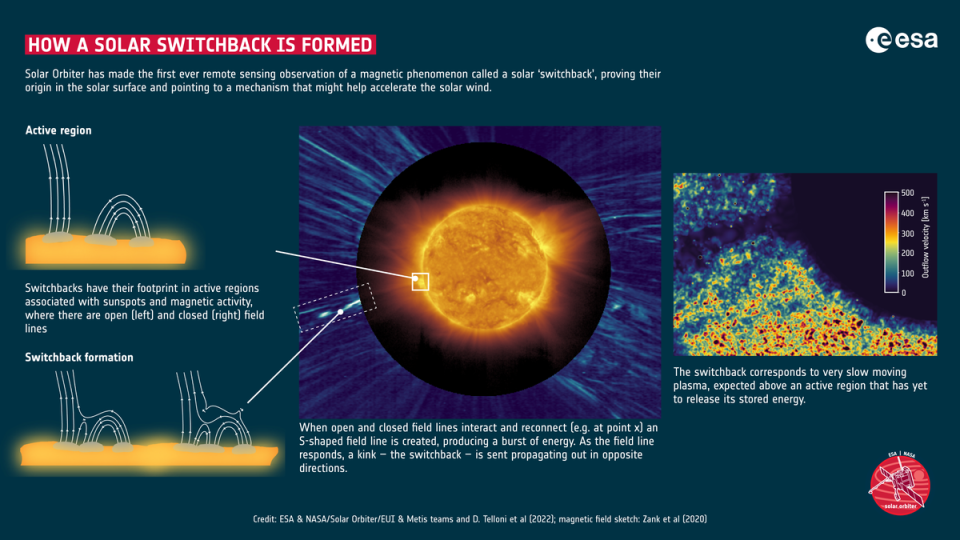ESA’s solar probe captures the reversal of the Sun’s magnetic field, confirming solar wind theory

The European Space Agency’s Solar Orbiter probe may have just captured evidence of a solar magnetic field reversing directions, bolstering a theory for how the well known, but mysterious phenomenon takes place.
On 25 March, Solar Orbiter passed within the orbit of the planet Mercury to take close up images of the Sun. Using a coronagraph, a device that blocks out the disk of the Sun in the same way as the Moon during a total solar eclipse, the spacecraft’s instruments captured a strange S-shaped kink in the wispy streams of plasma seen in the corona, the extremely hot, outer atmosphere of the Sun.
This S-shaped kink might be the image of a solar magnetic field reversing, known as a magnetic switchback.
“I would say that this first image of a magnetic switchback in the solar corona has revealed the mystery of their origin,” Daniele Telloni, an astrophysicist at the National Institute for Astrophysics - Astrophysical Observatory of Torino, Italy, and lead author of a new paper on the phenomenon published in The Astrophysical Journal Letters, said in a statement.
Space probes had detected solar magnetic switchbacks as early as the 1970s, according to an ESA blog, but the process behind it has remained mysterious.
Solar Orbiter was launched in February, 2020, and flies an elliptical orbit around the Sun that sees it periodically pass closer to the Sun that the planet Mercury, allowing for close up studies of solar phenomena.
Unlike the Earth, which has a single magnetic field with two poles, the Sun contains of multitude of magnetic fields. Since the Sun consists largely of plasma, gas so hot the positively charged protons and negatively charged electrons have been separated, those magnetic fields provides paths through which the Sun’s plasma can travel.
Closed magnetic fields leave the Sun’s surface and return, like magnetic arches, and any plasma flowing along them moves slowly and returns to the Sun. Open magnetic fields, like those that snap lose of the Sun during a coronal mass ejection, extend out into the interplanetary magnetic field, and can allow plasma to escape into space, and accelerate it along the way.
Charged particles accelerated along such open magnetic field lines can sometimes strike Earth, leading to geomagnetic storms, stunning auroras and even radio communications disruptions.
In some theories of how solar magnetic switchbacks take place, open and closed magnetic fields interact, creating a burst of energy that ends the closed magnetic field, making it propagate backwards temporarily, before it snaps back like a whip to its original orientation.

“The first image from Metis that Daniele showed suggested to me almost immediately the cartoons that we had drawn in developing the mathematical model for a switchback,” Gary Zank, Director of Center for Space Plasma and Aeronomic Research at the University of Alabama, Huntsville, said in a statement. Dr Zank was the originator of the S-shaped kink theory of switchback formation and is a co-author of the study.
This observational confirmation of the mathematical theory of magnetic switchback formation could help scientists better understand the solar wind and solar storms, but more research is needed to connect switchbacks with their origins on the surface of the Sun. Specifically, scientists need spacecraft like Solar Orbiter, or Nasa’s Parker Solar probe, to fly through the switchback and take more measurements.
That opportunity is coming soon: the Solar Orbiter spacecraft will fly its next close pass of the sun on 13 October.
“This is exactly the kind of result we were hoping for with Solar Orbiter,” Daniel Müller, ESA Project Scientist for Solar Orbiter, said in a statement. “This was Solar Orbiter’s very first close pass to the Sun, so we expect many more exciting results to come.”

